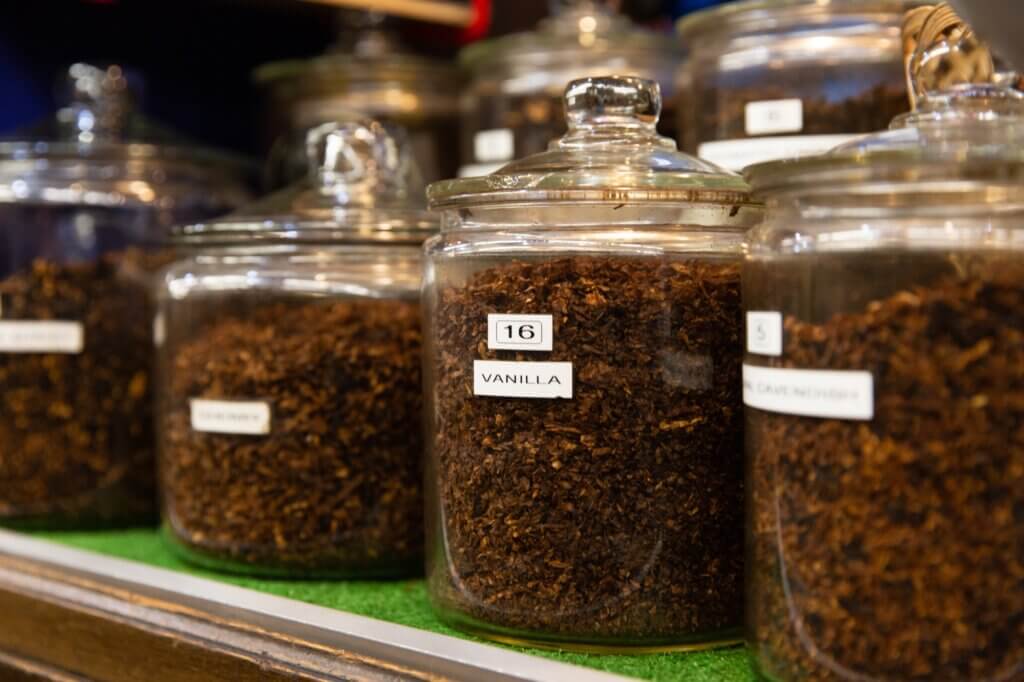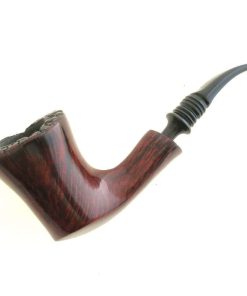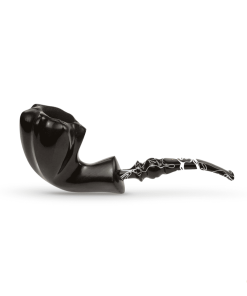RYO LifeStyle Blog
5 Interesting Facts about Tobacco Pipes
The enjoyment that comes with smoking a pipe is on another plane entirely. It is one of the most relaxing activities in existence because taking a couple of puffs of your favorite pipe tobacco blend is the perfect remedy to melt your worries away. Besides being one of the most popular pastimes in existence, tobacco pipes also have some very interesting facts linked with them.
Tobacco Pipes Have a Very Intriguing History.
Pipes have a very intricate history that dates back as far as thousands of years. Some of the earliest uses can be traced all the way back to 500BC, when it is believed that the Scythians, a group of nomadic warriors that lived in what is now Siberia, used wooden stems or reeds to inhale smoke from campfires.
What comes closer historically to the kind of pipe smoking that we have today was discovered in the ancient Roman and Greek empires. However, they burned leaves back then, not tobacco. Still, a pipe was developed for the purpose of smoking these leaves. Christopher Columbus discovered the tobacco plant in the late 1400s, and soon afterward, the manufacture of smoking pipes commenced.
The term “smoking” originated in the 1600s and has since continued to be used across the world in various languages and dialects. Before this time, smoking was commonly referred to as “dry drunkenness” or “puffing.”
Since tobacco was discovered by Columbus, and likely before in its native country, tobacco was used in a range of medicinal ways. In 1529, it was recorded that breathing in the odor of fresh leaves brought relief from headaches. Additionally, fresh green leaves could be used to relieve catarrh or colds by rubbing them around the inside of the mouth. In fact, in Europe during the 16th century, tobacco was prescribed for many common ailments.
Even in the later years of the 19th century, tobacco was still being administered medically, but in a more measured way. Now aware of the potential harmfulness of the nicotine content of the leaves, physicians replaced older administration methods with more advanced systems. That being said, tobacco smoke would still be administered per rectum for curing constipation.
Smoking a pipe was also once a part of religious ceremonies. As part of many Indo-American rituals, the shamans, priests, and medicine men all used to smoke pipes. It was thought that the smoke that emerged from the tobacco was holy. In many cases, it was used to cure illnesses or drive away evil spirits and curses.
Finally, it is also believed that, historically, early American settlers in Europe brought tobacco over to the continent in the 16th century, at which point its popularity quickly spread throughout the region. Up until then, tobacco was limited strictly to the New World. Native Americans smoked it on a regular basis and used it to trade for goods with settlers.
And while the design of pipes has undergone many changes since its inception, their overall purpose remains the same: to provide a suitable instrument to burn plants so it creates an enjoyable smoke.
Bentley and Big Ben Are Some of the World-Renown Pipe Makers

There are a couple of high-class brands that produce and sell the most exclusive, high-end tobacco pipes. The pipes that they produce and sell are meticulously handcrafted using the finest materials and techniques possible. This means that with their pipes, they give their patrons a superior level of quality that cannot be found in your typical pipes. A few of these brands include:
Amorelli: Amorelli is amongst the most popular Italian pipe brands. The workshop, managed by Salvatore Amorelli, has been based in the heart of Sicily since 1979. Each Amorelli pipe is unique and made of high-quality Sicilian briar. These creations combine tradition and innovation with revolutionary designs.
Bentley: Bentley is not just one of the most expensive and exclusive automobile companies; it is also the name of a high-end pipe brand. Their pipes are made to enhance your tobacco tasting. They are made by the company, Gubbels, which also manufactures Big Ben pipes. Each Bentley pipe is made of high-quality briar and has been meticulously designed. The aluminum parts bring style and innovation to their pieces. The Bentley range offers a variety of shapes (straight, half-bent, bent) and finishes.
Big Ben: Big Ben pipes are made by Gubbels (the company started by Elbert Gubbel). Don’t get fooled by their name; Big Ben pipes are made in the Netherlands and not in the United Kingdom. Thanks to their round shape and perfect finishes, they delight all fans of briar pipes.
Chacom: Chapuis-Comoy is a French company that creates and sells Chacom pipes worldwide. Set up in Villard-Saint-Sauveur, a village neighboring Saint-Claude (the world capital city of briar-wood pipe), it is one of the largest French pipe brands. Chacom pipes stand out thanks to their mix of tradition, creation, and innovation.
Dunhill—The White Spot: For more than 100 years, Dunhill pipes have been a reference in the tobacco pipe world. Flawless designs and excellence are the brand’s essence. Dunhill pipes are easily recognizable, thanks to their signature “White Spot” on the stem. In 2017, the brand changed its name and became “Alfred Dunhill’s The White Spot.” Many pipe smokers consider Dunhill pieces to be the best within the pipe-smoking industry.
Pipe Tobacco is of a Higher Quality than Cigarette Tobacco

First of all, pipe tobacco holds more flavor than cigarette tobacco. Ready-made cigarettes are a simple and inexpensive way to get a fix for tobacco; for this reason, tobacco farmers tend to save their higher-quality tobacco for pipe-smoking products. With a higher quality of pipe tobacco allows for more subtle flavors to permeate through the smoke onto the palette, rewarding the smoker with a more enjoyable experience. Therefore, if you’re someone that is particular about truly enjoying the rich flavors of tobacco, pipe tobacco might be more up your alley than cigarettes.
A Dirty Pipe Has a Special Benefit

Have you ever noticed the caked-on ash that develops inside your tobacco pipe bowl? This is actually proven to be beneficial as it helps to reduce the chance of burning. Without this crucial protective layer covering the bowl, your tobacco pipe could be exposed to direct fire; and constantly placing a flame on the pipe day after day may cause some damage.
History Lives in Briar Pipes

When a briar pipe is made, the root is allowed to grow for 30 to 60 years before being harvested. Following this, the roots are cooked for a couple of hours and then dried for several months before being made into pipes. Imagine that amount of time and how much history has gone by before your briar pipe is finally harvested and crafted. Isn’t that amazing?
Now that we know the interesting facts, here’s a mini-guide to pipe tobacco for beginners:
Pipe smoking is a timeless and extremely unique activity. The tobacco you buy online or at your local shop is a blend of tobacco from various parts of the world. Tobacco blenders will use different types of leaves to produce different flavors, burn rates, and mouth feels.
Types of Tobacco
Winemakers mix varietals to create unique flavors. Brewers add malt and hop to change the flavor of a beer. Tobacco blenders do the same with different proportions of the following leaves:
- Virginia: Naturally sweet and light, it burns quickly and adds a nice flavor to your smoke.
- Burley: Slow burner that has a nutty, relatively mild flavor.
- Perique: A Louisiana-based leaf with spicy notes.
- Bright: A North Carolina-based leaf with a mild flavor.
- Latakia: Hefty, smoky flavor that adds punch and color to your blend.
- Oriental: An overall category of Middle Eastern leaves (Latakia included) that produce a bold, spicy profile.
From the above, tobacco blends are further divided into two categories:
Aromatics
The tobacco aromas that often lull us into a world of cherries, blackberries, and cream are the result of aromatics. One name you’ll hear a lot in this category is Cavendish, a mix of several different types of tobacco leaves that has a sweet smell.
Aromatic blends get their distinct names and smell from what is called “casing,” a syrup that includes said flavors and sugar. This syrup is added during processing. The tobacco soaks up the flavors and is then heated to remove excess moisture. At the end of the process, some blenders add alcohol (rum, for example) to enhance the flavor. By the time the tobacco is packaged, the alcohol has burned off, and moisture levels are back to normal.
Non-Aromatics
Non-aromatic means the tobacco doesn’t have any casing. Because non-aromatics tend to have a pretty strong taste, they’re toned down with complimentary aromatics. For example, a blend called Highlander, which is a mix of non-aromatic English tobacco and aromatics of the Cavendish variety.

Storing Your Tobacco
Air-tight containers are the key component to the proper storage of your tobacco. Long-term exposure to air can dry out your tobacco. Should you find yourself with a dry fistful of tobacco, wet a washcloth completely, ring it out until no water drips out, then set it across the opening of your jar. Close the lid as best you can and let it sit for 6 or 7 hours. This should rehydrate your tobacco, but be careful not to leave the cloth on too long unless your tobacco may mold.
















